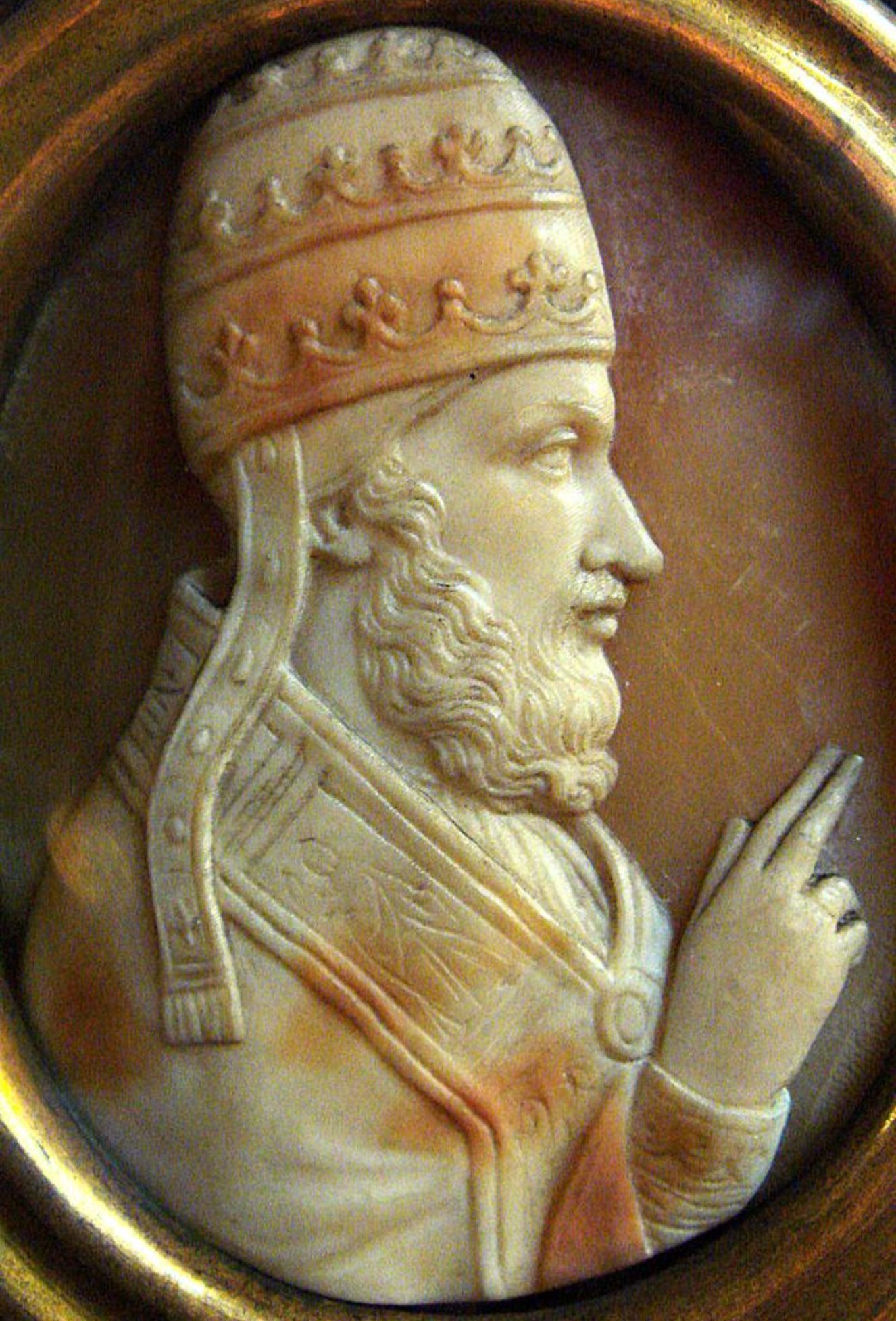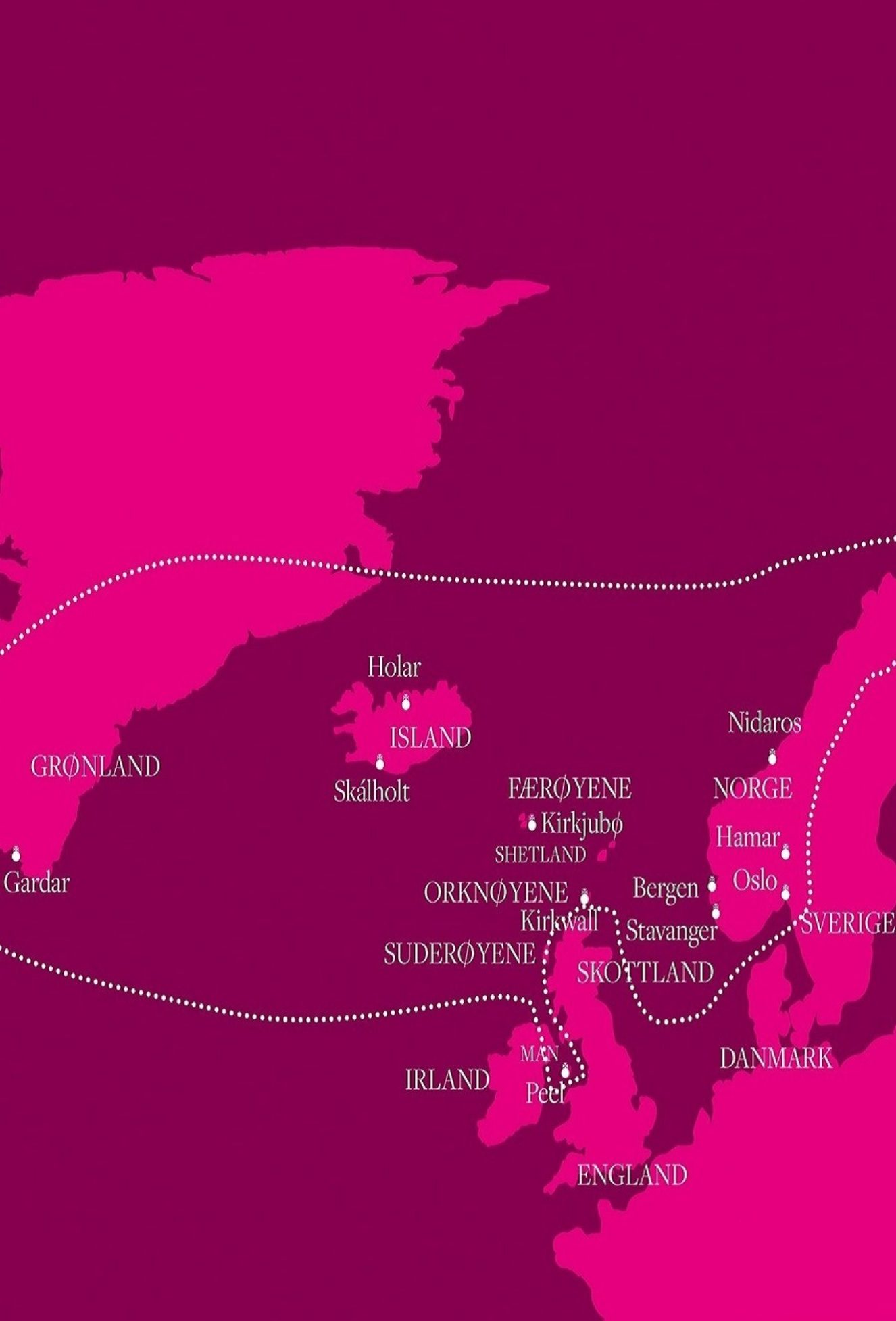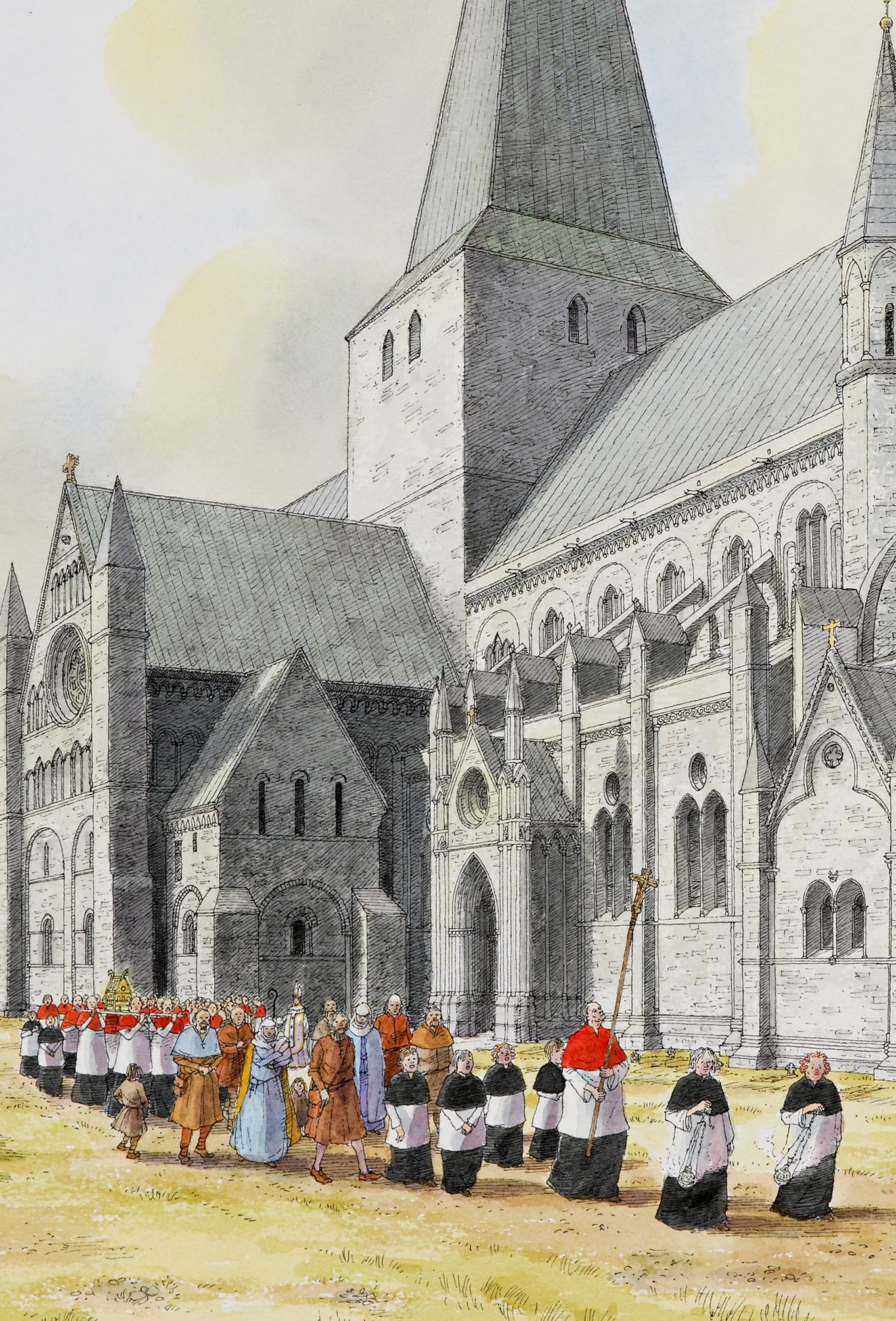The establishment
In the 11th century the church of Norway belonged to the archbishopric of Hamburg/Bremen. However, most of the missionary priests who came to Norway were from England and the ties to Hamburg/Bremen were therefore weak.
At the beginning of the 12th century the Nordic countries were detached from Hamburg/Bremen because of the establishment of a new archbishopric in Lund in Sweden. In 1153 a new archbishopric for Norway was founded by a delegation from Rome under the leadership of the English cardinal Nicolaus Breakspear. When Breakspear came back to Rome later that year, he was elected Pope and chose the name Hadrian IV.



